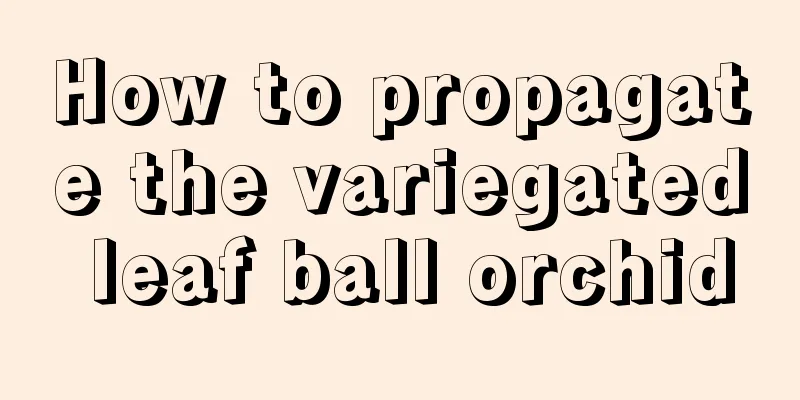How to propagate the variegated leaf ball orchid

1. Cutting propagationThe most commonly used method for propagating variegated Hoya is cuttings, which can be done from May to September. If the temperature is suitable, cuttings can be done all year round. When taking cuttings, first use scissors to cut mature branches with terminal buds. The selected branches must have at least three nodes. Then cut off the leaves at the bottom of the branches, leaving only two or three tender leaves at the tip. Dip the pruned branches in acetic acid for disinfection, then insert them into the prepared soil. Remember to water every day to keep the soil moist. Newly transplanted seedlings should be protected from light and properly shaded to avoid direct sunlight. When the average temperature is above 20℃, the cuttings can take root in about twenty days and are relatively easy to survive. After the seedlings have grown steadily, pay attention to maintenance and carry out regular fertilizer and water management to promote the healthy growth of the variegated ball orchid. 2. Layering propagationPropagation by layering is usually carried out from May to August when the variegated Hoya is growing vigorously. Select a full and thick young vine, press the branch near the top of the vine into the soil to fix it, keep the soil moist, and maintain it properly. New roots will grow from the branch in about half a month. At this time, you can cut off the newly grown roots and transplant them. Keep the seedlings away from light and keep the soil moist. Layering is a relatively fast method of propagation. 3. Seed propagationThe seeds of the variegated Hoya generally begin to mature from late summer, and the seeds will mature until autumn and winter. After the mature seeds in summer and autumn are collected, they can be sown and propagated immediately. If the seeds are collected in late autumn and winter, they need to be properly stored and sown after the temperature rises in the spring of the following year. It is best to choose high-quality and plump seeds when sowing. Keep the soil moist after sowing. Pay attention to proper shading after the seedlings germinate. When three or four leaves grow, they can be transplanted into pots and then carry out regular fertilizer and water management. |
<<: How to propagate tea roses
>>: How to trim a gold diamond
Recommend
The autumn heat is here. If you do these stupid things, your flowers will die immediately!
When watering in the beginning of autumn, don’t w...
Why are the tips of the dragon blood tree leaves turning yellow and dry?
1. Too much light Reason: It likes an environment...
What are the breeding methods and precautions for money string
Money string breeding method Money tree is a plan...
The cultivation method and precautions of mustard tuber
1. Maintenance methods 1. Soil: It does not have ...
The difference between June Snow and Gypsophila paniculata
1. Differences in plants: June snow is an evergre...
The difference between Metasequoia and Yew
blade The leaves of yew are small and narrow, wit...
The difference between the eight-angle gold plate and Schefflera and peacock wood
Peacock Wood Peacock tree is a shrub or small tre...
What Chinese medicinal herbs have high economic benefits (what Chinese medicinal herbs have good prospects for planting now)
In some mountainous areas, wild Chinese medicinal...
Can Clivia seeds be planted?
Can the seeds of Clivia be planted? The seeds of ...
Don't just grow green radish and spider plants, these flowers are so beautiful, why don't you try them
Freesia (Author: Buy pictures online Source: Nitu...
What flowers are suitable for growing in Guiyang? What are the city flowers and trees?
1. Climate characteristics of Guiyang Guiyang has...
What kind of pot is best for Luo Han bamboo?
Bamboo pot If the bamboo is potted, it is mostly ...
What flowers are suitable for growing in Yushu? What are the city flowers and trees?
1. Climate characteristics of Yushu Yushu has a t...
Can spider plants be grown in water?
1. Is it possible? It likes a humid environment, ...
Is green pepper a shade or sun-loving plant?
Do green peppers prefer shade or sun? Green peppe...









